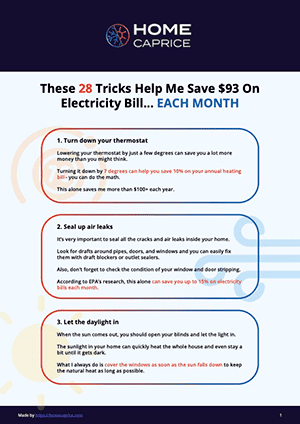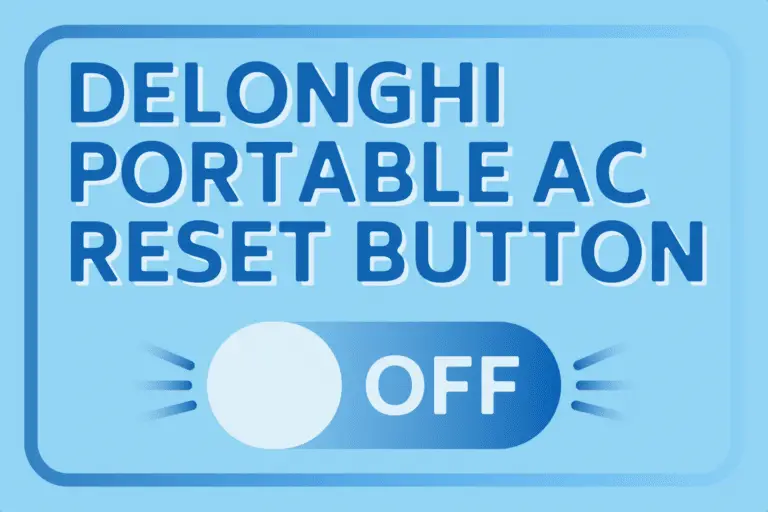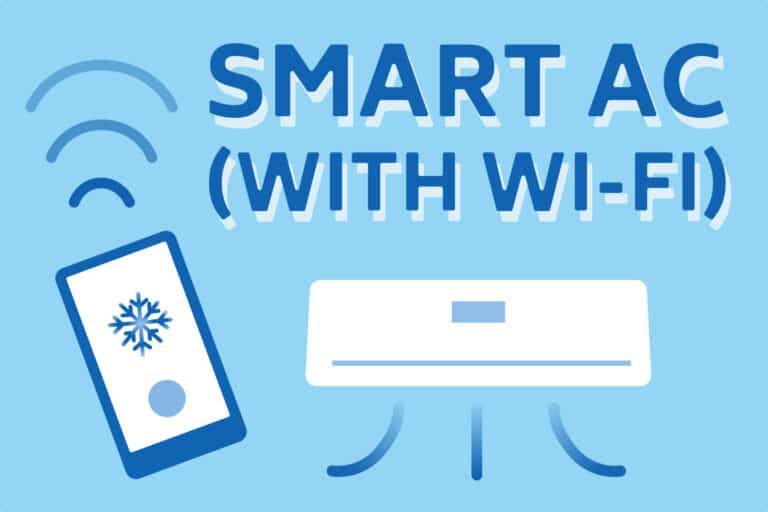Air conditioners break down more often and guzzle lots of energy as they age. Those irksome bills keep burning your wallet if your AC unit is over a decade old.
By swapping it out for a new, energy-efficient model, you could slash those cooling costs by 20-40%.
While the upfront costs are expensive, weigh them against better performance and air quality. Keep reading to explore more options when looking to replace an AC unit.
Know When It’s Time to Replace Your AC
On average, your AC’s lifespan should range from 10 to 15 years, depending on usage and maintenance intervals.
There are a few signs that point towards AC replacement. Some are easy-to-fix DIY, while others may lead to high repair costs. Frequent AC repairs may prompt a homeowner to install a newer AC model.
Plus, delaying the replacement of an aging AC poses several risks, such as decreased air quality, sudden failure, more repair costs, higher energy costs, and more.
Frequent Repairs
If you regularly dial your AC technician, your air conditioning system is likely on its last legs. Most crucial components wear out as your AC ages, leading to frequent breakdowns.
Higher Energy Bills
As air conditioners become less efficient, they use more energy to cool your home. A steep hike in your monthly utility costs, regardless of changes in usage patterns, is a telltale sign that it’s time to replace your AC.
Noises and Leaks
Some signs of underlying issues include unusual sounds such as banging, rattling, or grinding from your AC unit. Also, if there are leaks around the unit or in the ductwork, it could indicate issues with the system’s integrity.
Visual Cues
Visible dust, deteriorating components, and corrosion often suggest that your AC is nearing the end of its lifespan. They compromise your AC’s structural integrity, leading to leaks and poor performance.
Understanding How Your AC Works & Its Replacement Options
Air conditioners use four main components: the condenser, compressor, expansion valve, and evaporator oil. They work together to extract heat from indoor air and release it outside, resulting in cooler indoor temperatures.
Central cooling systems use the refrigeration cycle to cool air. Initially, a compressor raises the gas temperature by compressing it. This hot gas then travels through condenser coils outside the house. A fan blows air over these coils, dissipating heat and causing the gas to condense into a liquid state.
The refrigerant then passes through an expansion device, significantly reducing its pressure and temperature. It flows through an indoor evaporator coil within a furnace or air handler unit. Blower fans push hot air over the coil while others expel the cooled air outward.
As the liquid undergoes a phase change back into vapor in the evaporator coil, heat is absorbed from the circulated indoor air, effectively cooling the room and enhancing comfort.
Central vs. Window AC: Key Differences
Central air conditioners utilize an interconnected supply and return ductwork system to evenly distribute air across multiple rooms.
This provides whole-home cooling from a single unit. Window or wall air conditioners are self-contained systems built to cool one room independently.
Installing window units suits homeowners seeking supplemental spot cooling or initial budget-friendly options.
Central air cons deliver aesthetics, control, efficiency, and comfort benefits for those looking to upgrade beyond makeshift window units dangling precariously.
Split System vs. Packaged Unit Considerations
All air conditioners work the same way—they cool by absorbing heat through a liquid, turning it into a gas. Inside your home, the refrigerant absorbs heat, then releases it outside as it evaporates and moves to the outdoor unit.
But the type of system matters. Split systems have separate indoor and outdoor units, allowing more customization. Packaged units have everything in one outdoor cabinet, which might be cheaper to replace. However, packaged units have lower efficiency ratings than split air conditioners.
Refrigerant Types and Environmental Impact
R-410A has widely replaced older refrigerants with its favorability for efficiency and safety, holding 1,870 times less global warming potential.
As refrigerants continue phasing out, AC replacements should shift towards options like R-32, showing early promise with 30-50% less global warming impact than R-410A.
Overall, refrigerant types, charge levels, containment, and leakage prevention have a measurable environmental impact. Replacements should account for their direct effect on emissions and climate change.

Download this FREE cheat sheet to find 28 tricks that can help you save on your electricity and heating bill each month.
Click here to get a FREE Cheat-SheetThe Air Conditioner Replacement Process
1. Getting Quotes from HVAC Contractors
When seeking bids, have contractors thoroughly assess your home’s layout, sizing needs, efficiency goals, and ductwork. This yields tailored proposals meeting the unique requirements of your space.
For convenience, you can fill in this form to compare quotes from your local HVAC contractors.
2. Comparing Bids and Checking Credentials
Compare energy ratings, equipment quality, workmanship warranties, and responsiveness. Vet licenses, insurance, certifications, and online reviews before selecting your ideal replacement partner.
3. Preparing Your Home for Installation
Get your home installation-ready by clearing equipment areas, upgrading complementary components, replacing old filters, and cleaning duct debris. This facilitates smooth workflow.
4. What to Expect on Install Day
Expect choreographed coordination—old unit removal, new equipment lifted into place, cautious electric and refrigerant line connections, meticulous testing, and configuration adjustments for optimal performance.
5. Optional Add-Ons
Consider duct repairs, zoning control for independent area temperatures, mini split units for difficult rooms, programmable smart thermostats, and air purification addons to enhance your new system.
Choosing the Right AC Unit for Your Needs
Here are some factors to consider when choosing an AC unit:
Room Size and Capacity
Getting the right size AC unit is key to keeping cool without breaking the bank. Go too small, and it’ll struggle to keep up, but go too big, and you’re just tossing money out the window.
Consider your room size, insulation, and climate to find the perfect fit and enjoy efficient cooling without draining your wallet.
And don’t overlook those efficiency ratings like SEER—they make a big difference in your electricity bill.
Check out some cool upgrades like smart thermostats and air filtration to take your comfort to the next level. It’s like having your mini climate control expert at your fingertips!
Cost Considerations
Swapping out your old AC for a sleek new model? Big move. And getting a handle on the financial nitty-gritty is key.
We’re not just talking about the sticker price on the unit itself. You’ll want to budget for installation labor, permit fees if needed, and some ductwork adjustments. It’s like a home upgrade jigsaw – every piece impacts your comfort.
Costs fluctuate based on your home’s quirks and installation complexity, so scoring an itemized quote upfront helps map it all out.
Split payments are usually an option to keep upfront costs manageable. And don’t skip scoping out rebates or tax incentives that could save a nice chunk of the total investment. Saving now and saving long-term? Yes, please!
While that upfront bill might make you rethink, envision it as an investment for future savings. A brand-spanking-new energy-efficient AC works wonders for shrinking those pesky monthly utility bills.
Not just superior comfort but setting yourself up for compounding financial perks. Your future self will be showering you with gratitude.
Maintaining Your New AC Unit
Proper care keeps that new AC running smoothly for years. Make maintenance a top priority. Schedule annual tune-ups before each cooling season. The HVAC pro will clean, check levels, calibrate the thermostat, and scan for issues. Well-maintained units are energy-efficient with longer lifespans, which helps avoid pricey breakdowns.
Understand your warranty—most cover extensive repairs in the first 5-10 years if you prove regular maintenance. No excuses!
Book tune-ups for your AC each spring and fall—healthy habits prevent problems. Get systems optimized for summer chills and winter efficiency.
Minor troubleshooting is easy to DIY. Change filters, clean vents, check batteries, and refill refrigerants. Leave major repairs to the experts to avoid worsening issues or voiding warranties.
TLC and scheduled maintenance mean years of comfort from your new AC. Look after it for a supreme chill in return.


Download this FREE cheat sheet to find 28 tricks that can help you save on your electricity and heating bill each month.
Click here to get a FREE Cheat-Sheet![9 Reasons Why Your Air Conditioner Starts Then Stops Quickly [FIX IT]](https://homecaprice.com/wp-content/uploads/2022/04/Air-conditioner-starts-then-stops-768x512.jpg)

